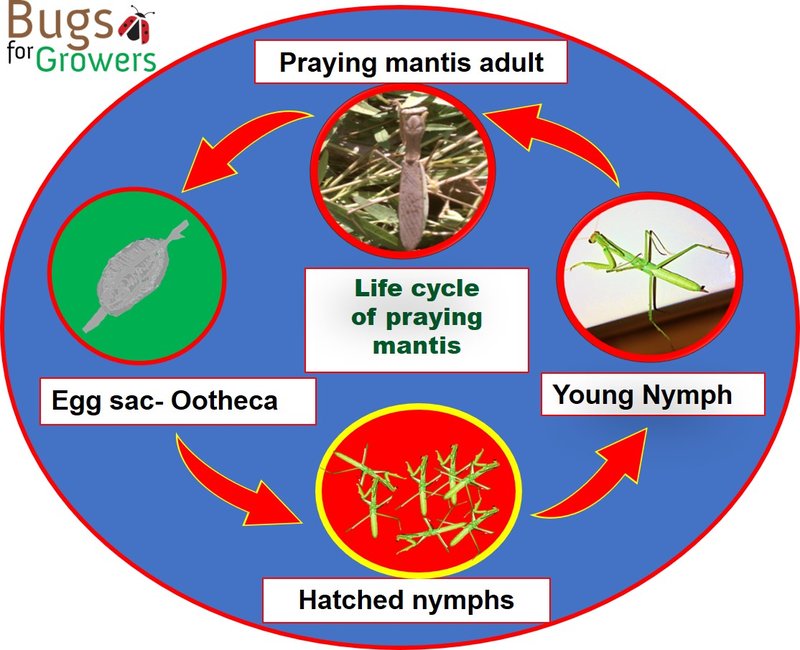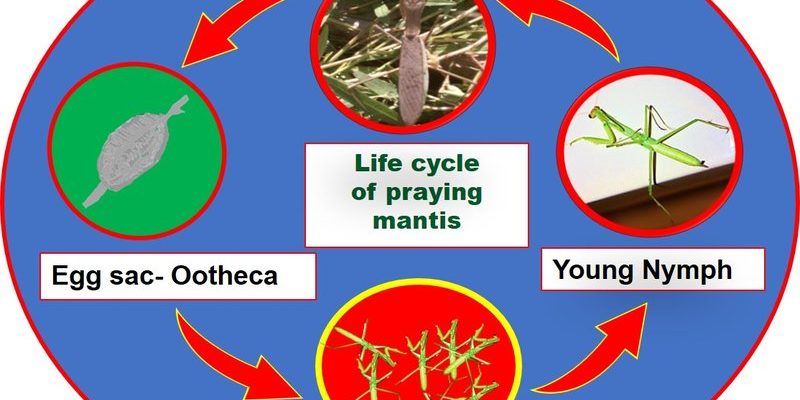
If you’ve ever seen one of them perched on a flower or lurking in the grass, you might have wondered about their journey. Understanding the lifecycle of a mantid not only teaches us about their role in nature but also enriches our appreciation for these intriguing insects. So let’s dive into the world of mantids and explore how they evolve through various stages of life.
The Egg Stage: A Hidden Start
The lifecycle of a mantid begins with the egg stage. After mating, the female mantid lays her eggs in a protective casing called an ootheca. You can think of this like a tiny incubator that keeps the eggs safe until they’re ready to hatch. Depending on the species, an ootheca can contain anywhere from a few dozen to several hundred eggs!
These eggs are usually laid in late summer or fall and can be found attached to stems, leaves, or even the sides of buildings. The ootheca acts as a shield against predators and harsh weather. It’s pretty clever! As winter rolls in, the eggs go dormant, waiting patiently for temperatures to rise again. Depending on the species, the eggs can hatch in spring to early summer, making their entrance just in time for warmer weather.
Here’s the thing: not all eggs will survive to hatch. Factors like temperature, humidity, and predation can affect the survival rate. This stage is crucial for the mantids’ population, laying the groundwork for the next generation.
Nymph Stage: The First Transformation
Once the eggs hatch, out come the nymphs—tiny versions of adult mantids. It may be shocking, but these little guys look just like their parents, only much smaller. This stage is like being a kid trying to navigate the world. They’re incredibly vulnerable and need to be careful because many animals see them as tasty snacks.
Nymphs will molt several times as they grow, shedding their exoskeletons to make room for their expanding bodies. Each molt is a fascinating part of their journey, and with each one, they become a little bit larger and more adept at hunting. During this phase, mantid nymphs learn the ropes, honing their predatory skills by chasing down small insects.
Here’s a curious thing: as nymphs grow, they often engage in cannibalism. Yes, you read that right! Sometimes, larger nymphs will eat smaller ones. This might sound harsh, but it’s a natural way to manage competition for food. It’s survival of the fittest in action.
Adult Stage: The Final Form
After several molts, the mantid finally reaches adulthood. Adult mantids are known for their striking appearance, with their elongated bodies and unique triangular heads. They have large, bulging eyes that can see nearly 360 degrees around them, which is critical for spotting prey. Adult mantids are almost like the *superheroes* of the insect world.
This stage is marked by the mantid’s enhanced hunting prowess. With their powerful forelegs, they can quickly snag their prey, which includes anything from crickets to even small birds! Adult mantids can also impressively turn their heads to track movement, making them remarkable predators.
Interestingly, while adults can live for several months, their primary goal is to mate and reproduce. Mating rituals can be quite dramatic; in some species, the female will eat the male after mating! This behavior ensures that she gets the nutrients necessary for producing a healthy batch of eggs. Nature can be wild, right?
The Importance of Mantids in the Ecosystem
You might be wondering, why does this lifecycle matter? Well, mantids play a crucial role in their ecosystems. As predators, they help control the populations of various pests. By keeping the numbers of harmful insects in check, they contribute to a balanced ecosystem. This makes them beneficial for gardens and agriculture, where they can naturally reduce pest populations.
Furthermore, their lifecycle can tell us a lot about environmental health. For instance, a decline in mantid numbers might indicate changes in habitat or the presence of pollutants. They can act as bioindicators—meaning studying them can give insights into the overall wellbeing of their surrounding environment.
So, if you’re ever lucky enough to spot a mantid, take a moment to appreciate not just their beauty but also their contribution to the world around us. Each phase of their lifecycle is a reminder of nature’s intricate web of life.
Challenges Faced by Mantids
Like many creatures, mantids face an array of challenges in their lifecycle. Habitat loss due to urbanization and agriculture is a significant threat. As their natural environments disappear, so do their chances of survival. Additionally, pesticides used in farming can affect both adult mantids and their nymphs, leading to declines in their populations.
Climate change also plays a role. Altered weather patterns can disrupt mating seasons and the availability of resources like food and suitable places for egg-laying. It’s a tricky situation, and without conscious efforts to protect their habitats, mantids may struggle to thrive in the future.
Those who appreciate these insects can help by creating mantid-friendly spaces in their gardens. By planting native flowers and avoiding harmful pesticides, you can support mantids and other beneficial insects in their lifecycle journey.
The lifecycle of a mantid is a captivating journey from egg to adult, filled with unique stages that highlight the beauty and complexity of nature. Each transformation, from the protective egg to the agile adult, showcases their adaptability and resilience. Understanding this lifecycle not only enriches our knowledge of mantids, but it also reminds us of the interconnectedness of all living beings.
So next time you see a mantid, take a moment to appreciate its journey. There’s so much more beneath the surface than just a cool-looking insect. Each mantid carries a story, a role in the ecosystem, and a testament to the wonders of life. Whether you’re an insect enthusiast or just curious, the mantid’s lifecycle is a reminder that every creature has its place in the grand tapestry of nature.

